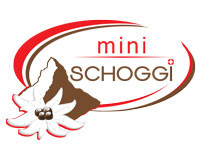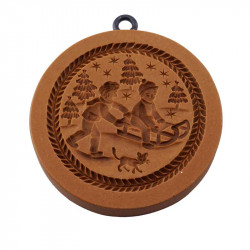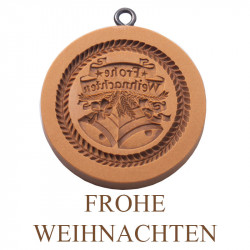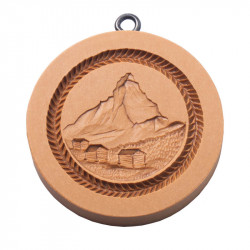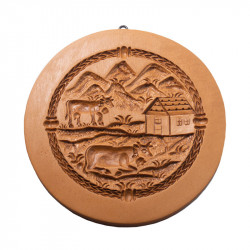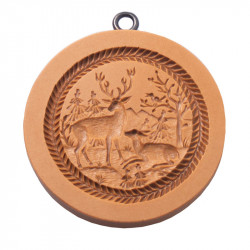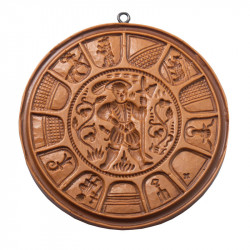A Mail deliveries
Order by 4 pm = delivery the next working day.
Free delivery
From CHF 100 purchase
-
MenuBack
-
Online Store
-
-
-
- Couverture
- Temperature control units
- Aids for chocolate
- Chocolate molds
- Praline fillings
- Chocolate ingredients
- Praline hollow body
- Chocolate colors
- Chocolate tattoos
- Chocolate packaging
- Bean to Bar
- Material for cutting chocolates
- Batons with Kirsch
- Airbrush for chocolate
- High Heels Accessories
- Textured films for chocolate
- Chocolate fountain & fondue
-
-
-
-
-
- Cakes Fillings & Ingredients
- Fondant & Marzipan
- Cakes tools
- Cake rings
- Silicone molds
- Decorative mats
- Baking pans for cakes
- Cake stand
- Cakes packaging
- Airbrush for cakes
- Sugar flowers accessories
- Cake Topper & Wedding Figurines
- Cakes dummies
-
-
-
-
-
-
-
-
-
-
-
-
-
-
-
-
-
-
-
-
-
-
-
- Baking chocolate
- Glucose & Sorbitol
- Cocoa beans
- Cocoa nibs
- Monin syrup
- Champagne & Alcohols
- Freeze dried fruits
- Cake & cake glaze
- Flours & baking ingredients
- Chocolate coating & chocolate
- Milk powder
- Granules
- Nuts & Nougat
- Fruit puree
- Creams & Fillings
- Egg yolk & egg white
- Fruit powder
- Special ingredients
- Fondant & Flower Paste
-
-
-
-
-
-
-
- Punching, cutting & embossing
- Mixing bowls & whisks
- Chocolate material
- Thermometer & Burner
- Gloves & Protective Material
- Smoothing & Modeling
- Roll out bar
- Dough scraper & horn
- (Flour) sieves
- Brushes & Tweezers
- Cake turntable
- Spatula & Spatula
- Silicone embossing molds
- Insert strips & cake slices
- Measuring cup
-
-
-
-
-
-
-
-
-
-
-
-
-
-
-
Schablonen & Stencils
-
-
-
-
-
-
-
-
-
-
-
Courses
-
-
- Current courses
- Praline courses
- Chocolate courses
- Chocolate kiss course
- Macaron courses
- Cake courses
- Baking courses
- Patisserie courses
- Ice cream course
- Guetzli, Cookie & Confectionery Courses
- Bread courses
- Pasta courses
- Apéro course
- Cooking courses
- Cupcakes courses
- Éclair course
- Courses in Zurich - Adliswil
- Children's courses
-
-
- Team Events
- Hen Night
- Retail Store
-
About Us
-
-
-
DirectionsDownload relevant PDF now.
-
-
-
Recipes blog
-
-
Recipes Blog
-
-
-
Shipping and Payment
-
List of products by brand Änis-Paradies
Änis-Paradies produces beautiful models for the creation of delicious Tirggel, Änisbrötli, Lebkuchen and Springerle. The models are often very old, so a piece of tradition lives on in these noble models.
There are 71 products.
Active filters
At Änis-Paradies you will find a wide variety of models for Änisbrötli, Lebkuchen, Tirggel and Springerle, some of the motifs depicted are up to 400 years old. Since its foundation in 1985,Änis-Paradieshas been run as a family business. In order to guarantee high quality, the company has developed its own moulding process and its own material for the models. The latter is a special casting resin, which is very user-friendly, easy to clean and suitable for food.
This casting resin is used to mould Änismodel and Springerlemodel, so that the craftsmanship of the last 400 years is still preserved and every person can decorate their own perfect treats with wonderful pictures and patterns. In the meantime, there are over 1000 different motifs in the assortment of Änis-Paradies. Of course, very different scenes, patterns and people are depicted. Over the years, tastes changed again and again and so today we can enjoy a rich variety.
There were already models very early on, for example, the Greeks and the Romans already refined a flat pastry with various patterns. The oldest known pastry model from Switzerland still on display in Zurich today comes from the St. Katharina monastery in Wil. The round wooden model depicts the Easter lamb, which was probably used in the past to stamp gingerbread. At that time, gingerbread was a very expensive pastry, but many monasteries had their own forest beekeeping, so they could use the honey they produced themselves to sweeten various delicacies. The additional beeswax was also welcome and was used to make candles, which were also embossed with various models.
Slowly, the models also spread among the citizens, but there they were rather made of clay or stone. As more and more sugar cane was imported, sweetening food became easier. Aeshni rolls were made in many bakeries and embossed with various motifs. Which picture or pattern was put on the treat changed again and again in the course of history. In the beginning, scenes from the Bible were very popular; many citizens could not yet read and were therefore grateful to receive a part of the story of Jesus or the Old Testament along with the treat.
At the same time, impressive pictures of richly adorned ladies and noble gentlemen were also very popular. Families and guilds competed to see who would serve the most sumptuous pastry
Soon, more everyday motifs also came into vogue. Besides a farmer in the field, there were also spinners at work, hearts as symbols or lovers. In addition, the upper classes began to use more detailed images of gardens, shepherds, aristocrats, musicians and festive societies, and doves and flowers were also popular.
The next great innovation was then models with many different motifs. Since the production of embossed biscuits had always been rather time-consuming, the aim was to reduce the effort a little. With only one model, delicacies with two, four, six or even more motifs were created.
The shape of the Änisbrötli was always adapted to the spirit of the times, so it is not surprising that technical achievements such as the steam locomotive were also immortalised as models. The development of new models continues to this day, and production has become rarer but by no means worse. Tirggel, Änisbrötli and other delicacies that are embossed with such models can still not be produced completely by machine. In order to get the details of a model onto the dough, a sure touch and some strength are needed. You can learn how to create such great treats yourself with us. At special team events, you and your group can make your own tirggels with great motifs. You can also find various models with very different motifs directly in our shop in Adliswil or in our online shop. So you can continue this wonderful, centuries-old tradition and create delicious tirggels.
